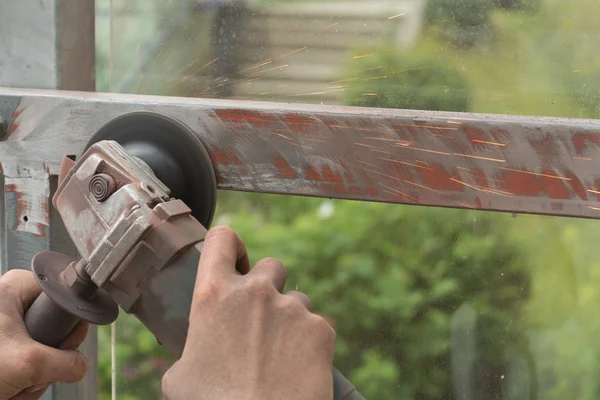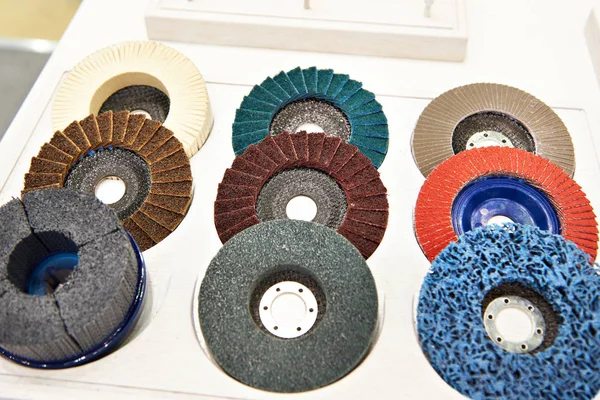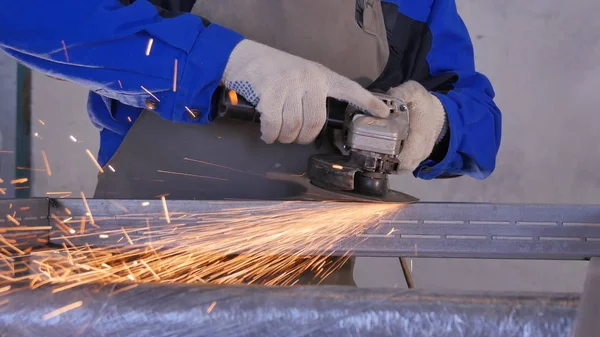When it comes to grinding metal, selecting the right abrasive tool is crucial for achieving optimal results. Among the various options available, flap discs have gained significant popularity due to their versatility and effectiveness. Flap discs consist of overlapping abrasive flaps that are adhered to a backing plate, offering a combination of grinding and finishing capabilities. However, with different types of flap discs available on the market, it can be challenging to determine which one is best suited for grinding metal. In this article, we will explore the various types of flap discs and help you understand which type is most suitable for your metal grinding needs.
What Types Do Flap Discs Have?
Zirconia alumina flap discs are known for their durability and long lifespan. They are designed for heavy stock removal and are particularly effective when grinding hard metals such as stainless steel and carbon steel. The zirconia alumina abrasive material offers high-performance grinding and is resistant to heat, making it ideal for demanding metal grinding applications.
Ceramic flap discs are considered to be one of the most aggressive flap disc options available. They are designed to handle heavy grinding tasks, such as removing welds, shaping metal, and smoothing rough surfaces. Ceramic flap discs have a self-sharpening feature that allows them to maintain their cutting ability for longer periods. They are suitable for grinding both ferrous and non-ferrous metals.
Aluminum oxide flap discs are versatile and suitable for a wide range of metal grinding applications. They offer a good balance between cost-effectiveness and performance. Aluminum oxide flap discs are effective for grinding softer metals such as aluminum and brass, as well as wood and plastic materials. They are an excellent choice for general-purpose grinding tasks.
Silicon carbide flap discs are primarily used for grinding non-ferrous metals, such as titanium, copper, and brass. They are also suitable for working with stone, glass, and concrete. Silicon carbide abrasive material is known for its sharpness and ability to provide a fine finish. These flap discs are often used for blending, smoothing, and deburring applications.
Factors to Consider When Choosing a Flap Disc for Metal Grinding:
- Grit Size:
The grit size of a flap disc determines the coarseness or fineness of the abrasive material. Lower grit sizes, such as 40 or 60, are more aggressive and suitable for rapid stock removal. Higher grit sizes, such as 80 or 120, offer finer finishes and are ideal for blending and finishing applications. Consider the specific metal grinding task and desired surface finish when selecting the appropriate grit size.
- Disc Diameter:
Flap discs come in various diameters, ranging from 4 inches to 7 inches or even larger. The disc diameter should be chosen based on the size of the grinding area and the accessibility of the workpiece. Larger diameter discs are typically more efficient for larger surfaces, while smaller diameter discs provide better maneuverability in tight spaces.
- Backing Plate Material:
The backing plate of a flap disc can be made of fiberglass, plastic, or metal. Fiberglass backing plates are the most common and offer good durability and stability. Plastic backing plates are lighter and more flexible, making them suitable for contours and curved surfaces. Metal backing plates provide excellent strength and stability, but they may be more prone to vibrations.
- Flap Configuration:
Flap discs can have different flap configurations, such as flat, conical, or angled. The configuration affects the grinding performance and the type of surface finish achieved. Flat flap discs are ideal for flat grinding surfaces, while conical flap discs are better suited for edge grinding and contouring. Angled flap discs provide a combination of flat and conical configurations, offering versatility for different grinding applications. Consider the shape of the workpiece and the desired grinding technique when selecting the appropriate flap configuration.
- Disc Density:
The density of flap discs refers to the number of abrasive flaps on the disc. Higher density discs have more flaps, providing a higher cutting surface area and a more aggressive grinding action. Lower density discs have fewer flaps, offering a smoother and more controlled grinding experience. Choose the disc density based on the level of material removal required and the desired surface finish.
- Flap Disc Design:
Flap discs can be designed for specific grinding applications, such as high-pressure grinding or cool grinding. High-pressure grinding flap discs are engineered to provide maximum material removal, making them suitable for heavy-duty grinding tasks. Cool grinding flap discs are designed to minimize heat generation and reduce the risk of workpiece discoloration or damage. Consider the specific requirements of your metal grinding project to choose the appropriate flap disc design.
What Type Of Flap Disc Is Best For Grinding Metal ?
The best flap disc for grinding metal ultimately depends on the specific metal, grinding task, and desired outcome. However, in general, zirconia alumina flap discs are widely considered as the go-to choice for grinding metal due to their exceptional durability and performance. They are especially effective for grinding hard metals like stainless steel and carbon steel. If you need aggressive material removal and long-lasting performance, zirconia alumina flap discs are a reliable option.
If you are working with softer metals like aluminum or brass, aluminum oxide flap discs offer a good balance between cost-effectiveness and performance. They are versatile enough to handle a wide range of metal grinding applications.
For specialized metal grinding tasks, such as working with non-ferrous metals or achieving a fine finish, silicon carbide or ceramic flap discs may be more suitable. Silicon carbide flap discs provide sharp cutting action for non-ferrous metals, while ceramic flap discs offer aggressive grinding for heavy tasks.
Ultimately, it is important to consider the specific requirements of your metal grinding project, including the metal type, surface finish, and desired material removal, to select the best flap disc that meets your needs.
Conclusion:
Choosing the right flap disc is essential for achieving effective and efficient metal grinding results. The different types of flap discs, including zirconia alumina, ceramic, aluminum oxide, and silicon carbide, offer varying levels of durability, aggressiveness, and suitability for specific metals and applications. Factors such as grit size, disc diameter, backing plate material, flap configuration, disc density, and design should be considered when selecting the most appropriate flap disc for your metal grinding needs. By understanding the options available and considering your specific requirements, you can confidently choose the best flap disc to achieve optimal results in your metal grinding endeavors.



